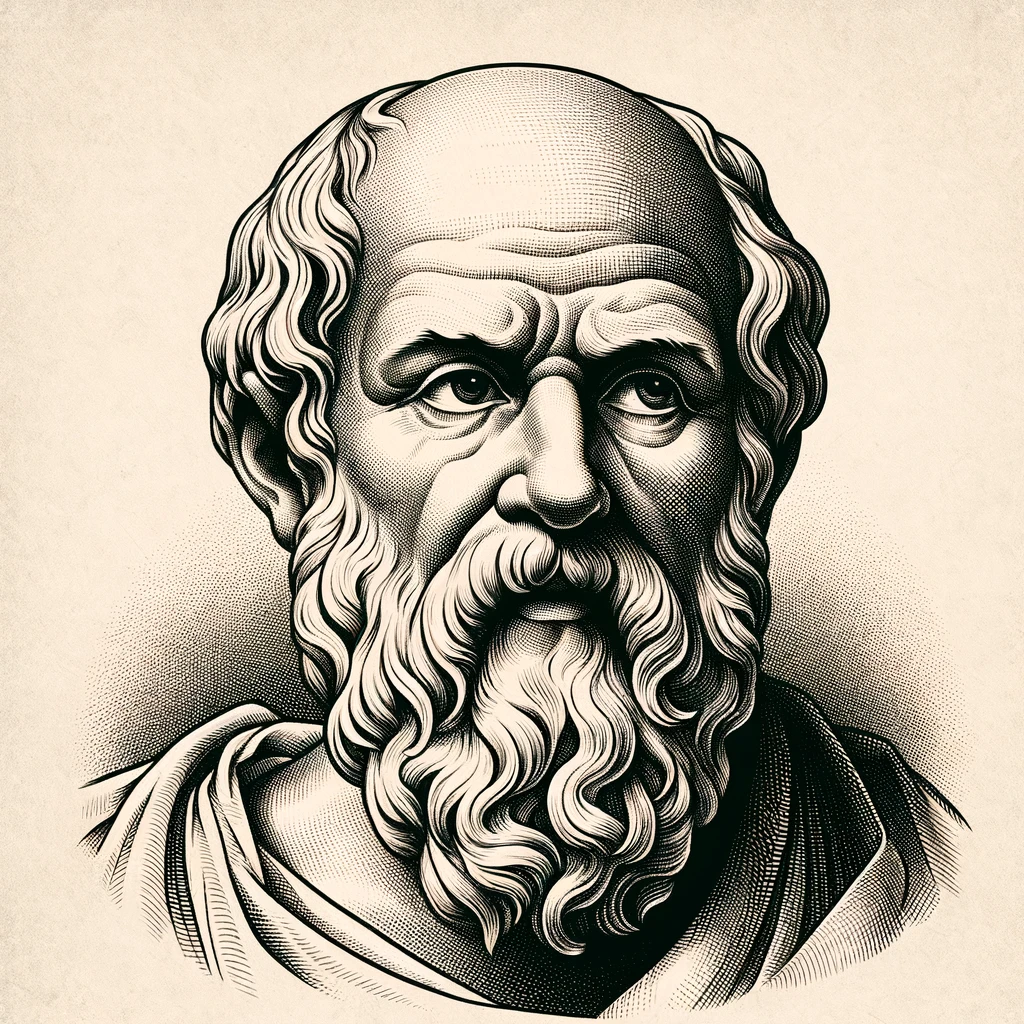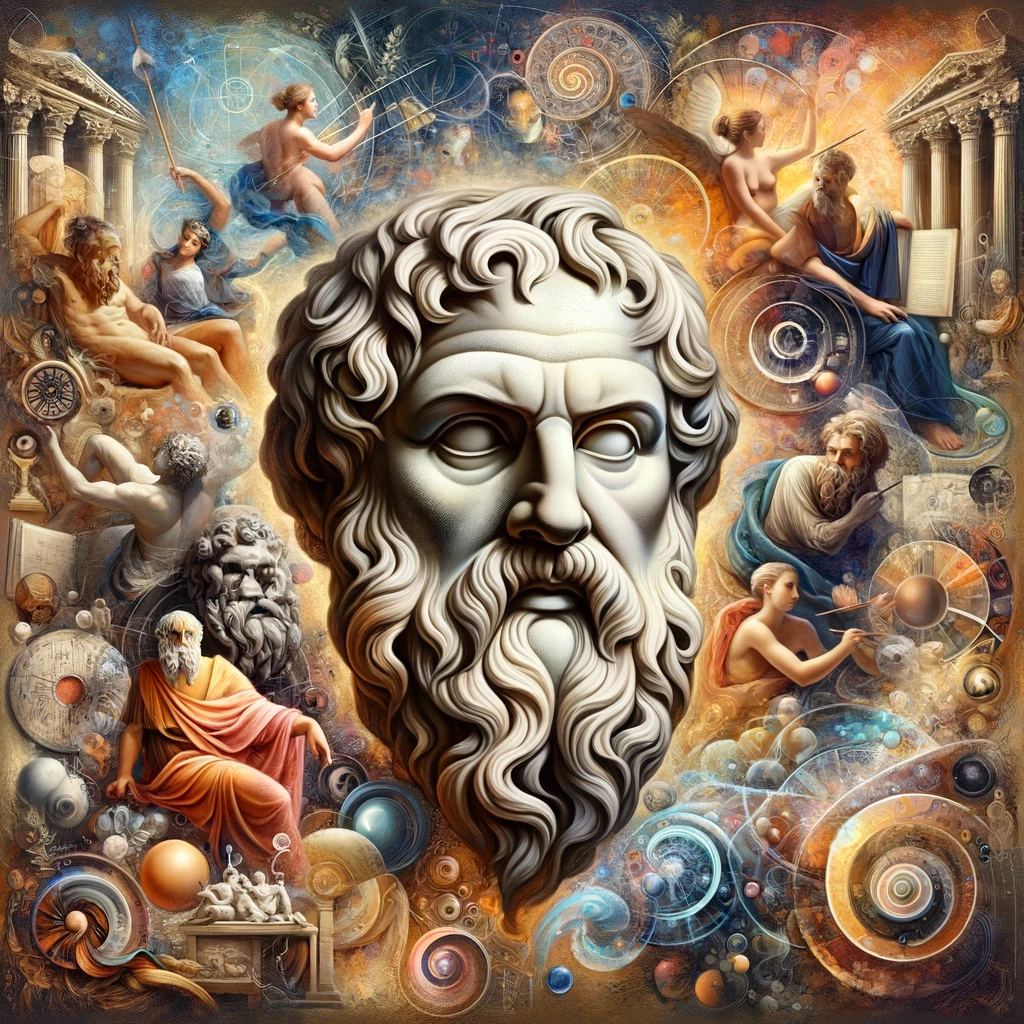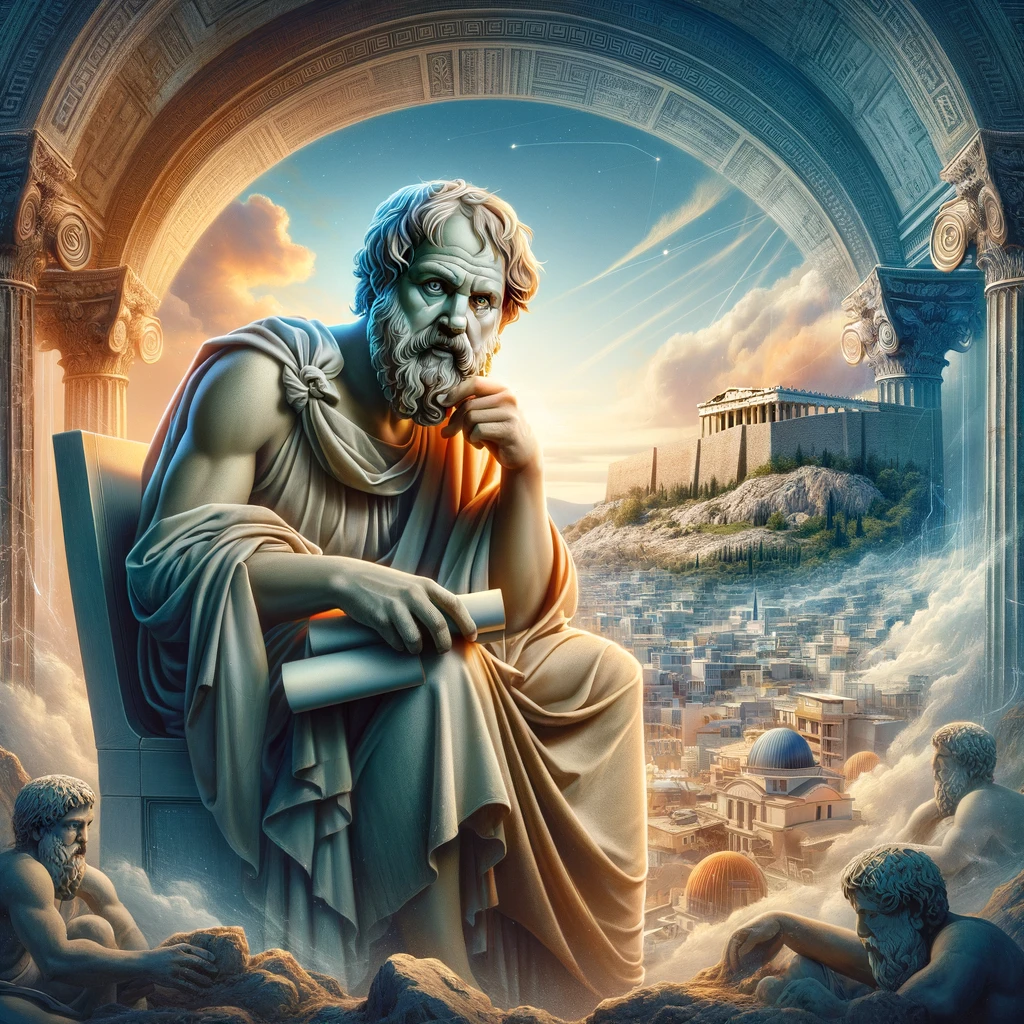Socrates, one of the foundational figures of Western philosophy, has transcended the boundaries of scholarly discourse to become a symbol of wisdom and the pursuit of truth in art, literature, and popular culture. From ancient sculptures to modern films, Socrates has been reimagined and depicted in myriad ways, each reflecting the cultural and philosophical nuances of the time. This blog post delves into the multifaceted portrayals of Socrates, exploring how his legacy has been shaped and reshaped in art and literature throughout history.
Socrates in Ancient Art:
In ancient Greek art, Socrates is often depicted as an unassuming figure, a departure from the idealized forms of physical beauty typical of the period. The most famous of these representations is perhaps the bust of Socrates, which shows him with a pensive expression, capturing his renowned disregard for physical appearance in favor of intellectual and moral beauty. These early depictions emphasize Socrates’ role as a public philosopher, engaging with citizens in the Athenian Agora.
Socrates Through the Lens of Literature:
The literary portrayal of Socrates began with his students, most notably Plato and Xenophon. Plato’s dialogues, while philosophical texts, are also masterpieces of literature, presenting Socrates as a relentless seeker of truth, often employing irony and wit. Xenophon’s “Memorabilia,” on the other hand, offers a more personal and pragmatic view of Socrates, highlighting his ethical teachings and practical wisdom. Throughout the centuries, Socrates has appeared as a character in countless works of fiction, from the satirical plays of Aristophanes to the dialogues of modern philosophers, each exploring different facets of his philosophy and personality.
Socrates in Renaissance Art:
The Renaissance, with its revival of classical learning, saw a renewed interest in Socrates. Artists like Raphael depicted Socrates among the great thinkers in his fresco “The School of Athens,” symbolizing the rebirth of classical wisdom and beauty. In these artworks, Socrates is often shown in dialogue, teaching or debating, underscoring his method of dialectical inquiry.
Modern Depictions: Popular Culture and Beyond:
In modern times, Socrates’ presence in popular culture is pervasive and varied. From plays like “Socrates on Trial” to films and television series that depict or reference him, Socrates continues to be a source of inspiration and contemplation. These contemporary portrayals often focus on Socrates’ trial and martyrdom, highlighting themes of freedom of speech, the value of questioning authority, and the pursuit of virtue in a complex world.
Socrates’ enduring legacy in art, literature, and popular culture is a testament to the timeless relevance of his ideas and the intriguing complexity of his character. From ancient busts to modern digital media, the depictions of Socrates serve not only as historical or artistic representations but also as reflections on the nature of wisdom, ethics, and the human condition. As we continue to reimagine Socrates in new forms and contexts, we keep alive the spirit of inquiry and the philosophical dialogue that he championed.








